
The term 1932 Ford may refer to three models of automobile produced by Ford Motors between 1932 and 1934: the Model B, the Model 18, and the Model 46. These succeeded the Model A. The Model B had an updated four cylinder and was available from 1932 to 1934. The V8 was available in the Model 18 in 1932, and in the Model 46 in 1933 & 1934. The 18 was the first Ford fitted with the flathead V-8. The company also replaced the Model AA truck with the Model BB, available with either the four- or eight-cylinder engine.
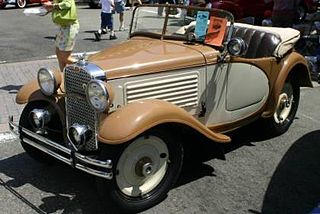
The American Austin Car Company was an American automobile manufacturing corporation. The company was founded in 1929, and produced motorcars licensed from the British Austin Motor Company from 1930 through 1934, when it filed for bankruptcy.

LaSalle was an American brand of luxury automobiles manufactured and marketed, as a separate brand, by General Motors' Cadillac division from 1927 through 1940. Alfred P. Sloan, GM's Chairman of the Board, developed the concept for four new GM marques brands - LaSalle, Marquette, Viking and Pontiac - paired with already established brands to fill price gaps he perceived in the General Motors product portfolio. Sloan created LaSalle as a companion marque for Cadillac. LaSalle automobiles were manufactured by Cadillac, but were priced lower than Cadillac-branded automobiles, were shorter, and were marketed as the second-most prestigious marque in the General Motors portfolio. LaSalles were titled as LaSalles, and not as Cadillacs. Like Cadillac - named after Antoine de la Mothe Cadillac- the LaSalle brand name was based on that of another French explorer, René-Robert Cavelier, Sieur de La Salle.
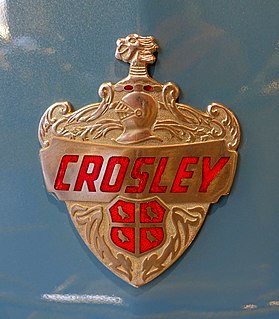
Crosley was a small, independent American manufacturer of subcompact cars, bordering on microcars. At first called the Crosley Corporation and later Crosley Motors Incorporated, the Cincinnati, Ohio, firm was active from 1939 to 1952, interrupted by World War II production. Their station wagons were the most popular model, but also offered were sedans, pickups, convertibles, a sports car, and even a tiny jeep-like vehicle. For export, the cars were badged Crosmobile.
The Ace was an American-assembled car made in Ypsilanti, Michigan by the Apex Motor Car Company, which was reorganized as the Apex Motor Corporation in 1921. The initial batch of cars assembled were sent to Seattle, Washington dealer FE Earnest, who had the idea for the Ace after he was unable to secure a steady supply of new cars for his dealership.

The Studebaker Commander is the model name of several automobiles produced by the Studebaker Corporation of South Bend, Indiana and Studebaker of Canada Ltd of Walkerville and, later, Hamilton, Ontario (Canada). Studebaker began using the Commander name in 1927 and continued to use it until 1964, with the exception of 1936 and 1959-63. The name was applied to various products in the company's line-up from year to year. The Commander was the company's mainstream product, the Studebaker Champion was the junior model, and other models were short lived or renamed as market conditions required.
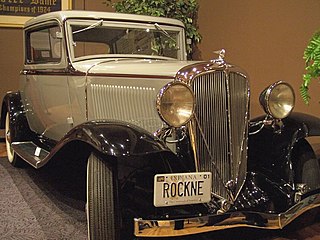
The Rockne was an American automobile brand produced by the Studebaker Corporation of South Bend, Indiana, from 1932 to 1933. The brand was named for University of Notre Dame football coach Knute Rockne.

The Kaiser-Frazer Corporation was the result of a partnership between automobile executive Joseph W. Frazer and industrialist Henry J. Kaiser. In 1947, the company acquired the automotive assets of Graham-Paige, of which Frazer had become president near the end of World War II. Kaiser-Frazer was the only new US automaker to achieve success after World War II, if only for a few years. Joseph W. Frazer left the company in 1949, replaced as president by Henry's son Edgar F. Kaiser.

Templar was a manufacturer of automobiles in Lakewood, Ohio from 1917 to 1924. The company was named for the Knights Templar and used a Maltese Cross as an emblem.
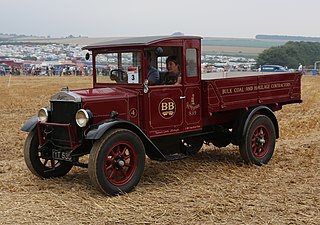
Willys Overland Crossley was a company jointly owned by Crossley Motors and Willys-Overland. They had factories in Stockport, England; Berlin, Germany; and Antwerp, Belgium. The company was formed in 1919 and continued until 1934. They manufactured cars, buses and trucks.
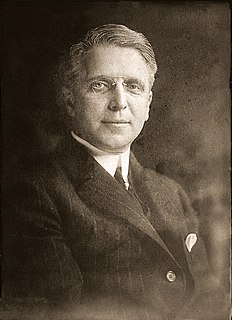
John North Willys was an American automotive pioneer and diplomat.

Willys-Knight is an automobile that was produced between 1914 and 1933 by the Willys-Overland Company of Toledo, Ohio.

The Westcott was an automobile produced in Richmond, Indiana and Springfield, Ohio in the United States between 1909 and 1925 by the Westcott Motor Car Company. The car company was named for its founder, John Westcott.

Graham-Paige was an American automobile manufacturer founded by brothers Joseph B. Graham (1882-1970), Robert C. Graham (1885-1967), and Ray A. Graham (1887-1932) in 1927. Automobile production ceased in 1940, and its automotive assets were acquired by Kaiser-Frazer in 1947. As a corporate entity, the Graham-Paige name continued until 1962.
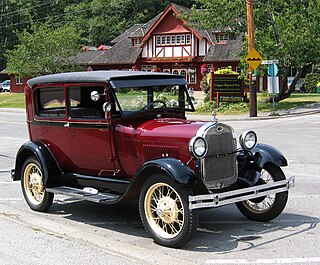
The Ford Model A was the Ford Motor Company's second market success, replacing the venerable Model T which had been produced for 18 years. It was first produced on October 20, 1927, but not introduced until December 2. This new Model A was designated a 1928 model and was available in four standard colors. The vehicle was also sold in Europe, but was replaced by locally built cars such as the Ford Model Y.
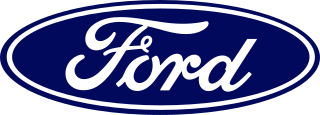
Ford Brasil is the Brazilian subsidiary of American automaker Ford Motor Company, founded on April 24, 1919. The operation started out importing the Ford Model T cars and the Ford Model TT trucks in kit form from the United States for assembly in Brazil. The Ford brand, however, had already been present in the country since 1904 with both vehicles being sold in Brazil.

The Western Antique Aeroplane and Automobile Museum (WAAAM) is located in Hood River, Oregon, United States, adjacent to the Ken Jernstedt Memorial Airport. WAAAM is a nonprofit 501(c)(3) organization committed to the preservation of, and education about aviation, automobile, and other historic transportation-related relics.

The Willys Americar was a line of automobiles produced by Willys-Overland Motors from 1937 to 1942, either as a sedan, coupe, station wagon or pickup truck. The coupe version is a very popular hot rod choice, either as a donor car or as a fiberglass model.

Willys was a brand name used by Willys–Overland Motors, an American automobile company, founded by also diplomat John North Willys, best known for its design and production of World War II era and later military jeeps (MBs), as well as civilian versions, and branding the 'jeep' military slang-word into the '(Universal) Jeep' marque, during the 20th century.

The Chrysler Six was a series of cars that were all installed with the Chrysler Straight Six when the company assumed operations of the Maxwell Automobile Company in 1924, and Chalmers Automobile Company in 1926. The Chrysler Six initially consisted of several Models, then Series designations that originally declared the approximate top speed each vehicle was able to consistently maintain, then each series number was incrementally updated every new model year, and each series was offered in several body style choices. The engines were technically advanced for their time and were entered in the 24 Hours of Le Mans for 1925, 1928 and 1929.



















